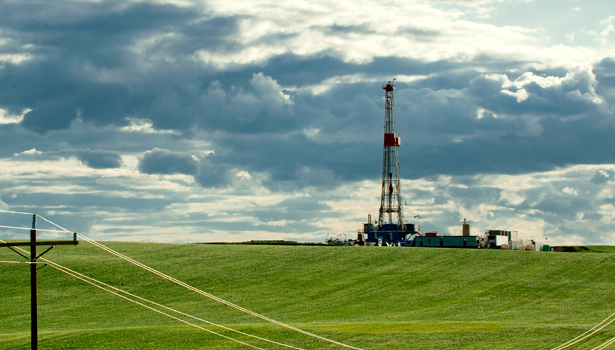Julie Fedorchak Column: We Don't Have To Choose Between Energy Development And Environmental Stewardship

A debate is occurring in our state about economic development versus environmental and cultural preservation.
It’s a healthy discussion. However, like too many important policy issues today, the extreme positions dominate the discourse. Opponents of any and all fossil fuel development are motivated and organized to stop it, while forces against government interference fight any efforts to strengthen regulations.
Their tactics are often designed to intimidate, blame or embarrass decision makers, and ultimately work to decrease discourse and prevent the creation of good solutions.
The truth is, choosing between energy development and environmental stewardship is a false choice and North Dakotans should firmly reject this notion. We can have both. We can, are and will continue to grow our state through energy development and maintain our heritage and quality of life.
The Public Service Commission is one of the agencies that plays a role in achieving this balance.
The PSC serves three key functions: permitting (licensing), siting and regulating. We regulate public utilities such as gas, electric and to a much lesser degree telephone service that are natural monopolies and operate without competition. We site a wide variety of energy-related infrastructure including gas and oil pipelines, electric transmission lines, gas processing plants and power generation facilities including wind farms. And we permit coal mining and reclamation, grain warehouses and grain buyers, and all of the commercial scales and measuring devices in the state.
Our experience in the siting of industrial projects and in coal mining and reclamation proves that energy development and environmental stewardship can complement each other.
The Public Service Commission’s siting process provides a thorough and completely transparent review of every industrial project we consider, whether it’s an oil pipeline, electric transmission line, wind farm or gas processing plant. We hold a public hearing, review environmental and cultural impacts, discuss mitigation efforts and reclamation plans and take public comments.
It’s a process that provides clarity and certainty to companies and protects private property rights. It also recognizes the long-term nature of industrial projects and provides an opportunity for everyone to help shape them to minimize negative impacts and maximize benefits to their community. It is an orderly, open, and efficient process that has worked well for years.
The PSC has similar experience in the coal permitting and reclamation process. Consider this example. The former Glenherald coal mine south of Stanton covered 6,600 acres. It produced enough energy to provide electricity for 1 million people for 30 years, all the while providing about 170 working families some of the best paying jobs in North Dakota and generating millions in local and state tax revenues.
Drive by that stretch of land today and I challenge you to point out on the landscape where that mine operated.
The same can be done with oil and gas development. True, the impacts are more numerous—because the opportunities and the spin off industries are far greater. But the fact is wells and roads can be removed. Landscapes can be effectively restored.
Furthermore, we can and are establishing greater protections for pipeline and rail safety, better protocols for handling of waste, and solutions for flaring, traffic, crime and school crowding.
My top goals at the Commission including working to reduce flaring, to put our valuable natural gas resources to work for North Dakotans and to improve the safety of our pipeline system.
These are the challenges of growth. These are the challenges of a place that is alive, and relevant and has a future.
I’m not suggesting North Dakota will ever be the same. Hopefully we will never return to the days when people regularly read books while driving across the state on I-94.
Our state is forever changed. That was happening in a different way before the energy boom, when small towns were drifting off to permanent slumber in large numbers. Today, rather than pondering our future as a buffalo commons and educating our young people for out of state jobs, North Dakota’s college graduates are choosing to stay here and families are being reunited as many of the sons and daughters who previously left are also returning home for opportunities in North Dakota.
Those who found the buffalo commons romantic and appealing will always fight this growth. But to all those North Dakotans who want jobs, vibrant communities and a beautiful environment let’s recognize the ways in which this is already happening, and work together on solutions to do it better.




